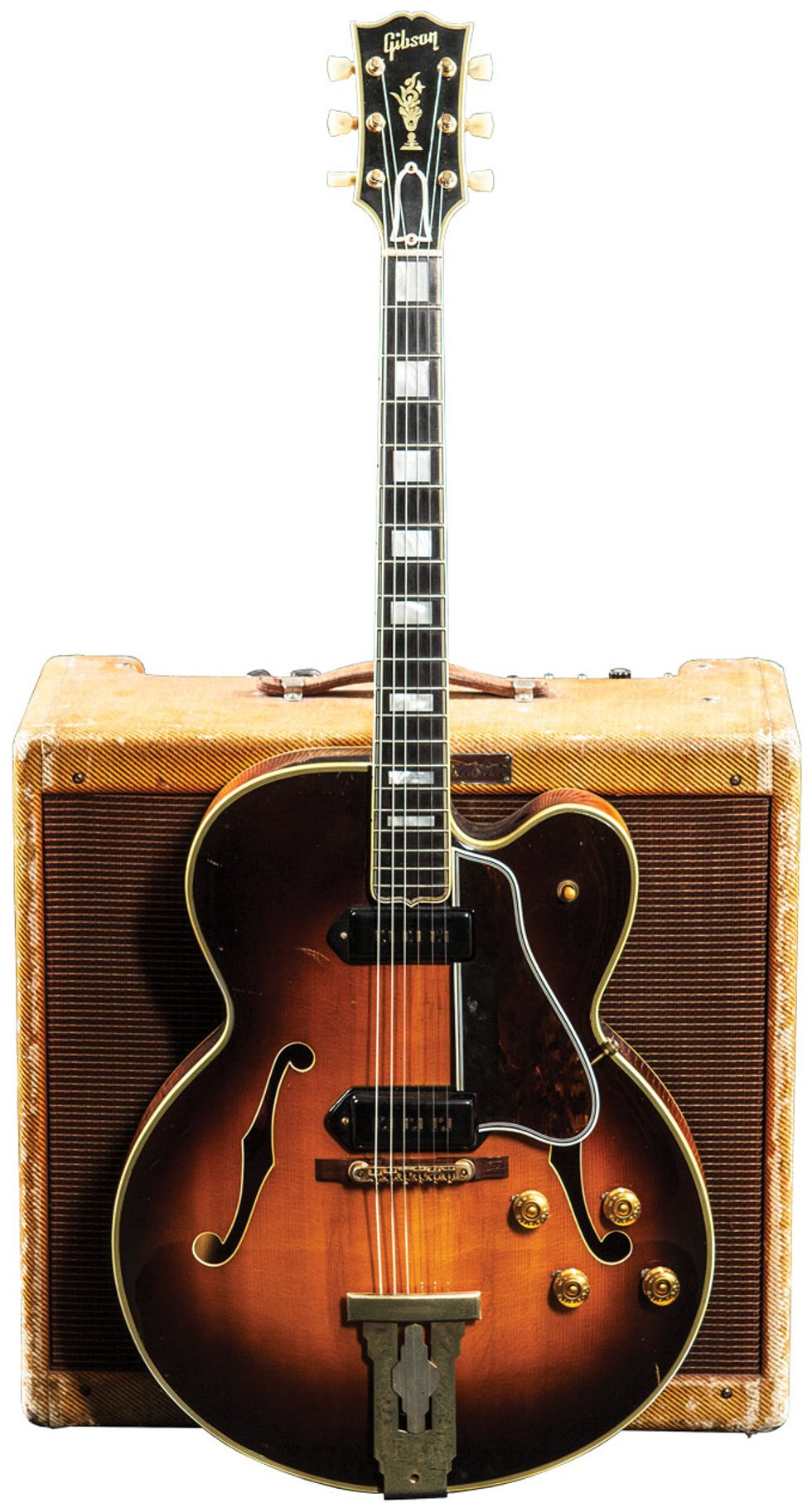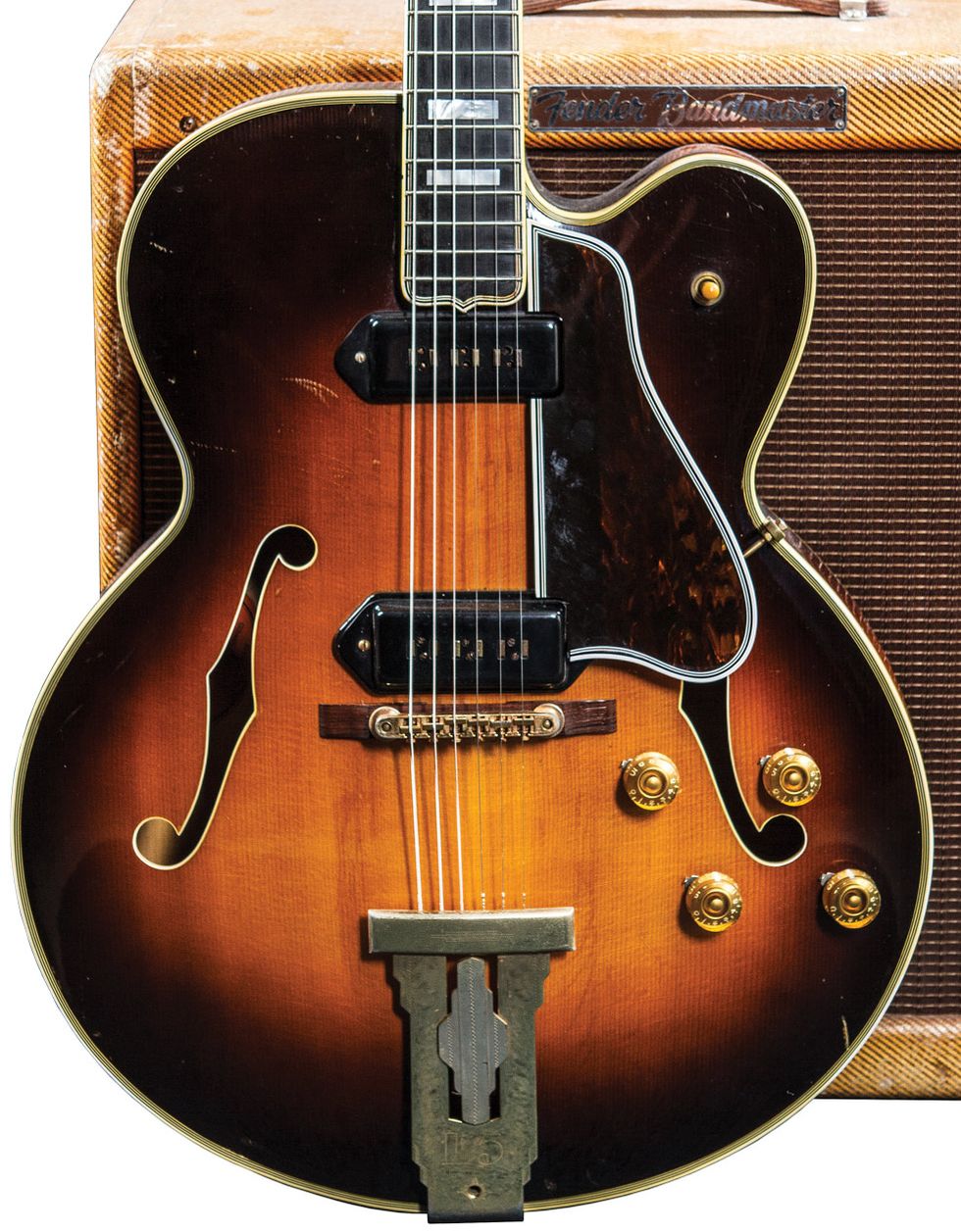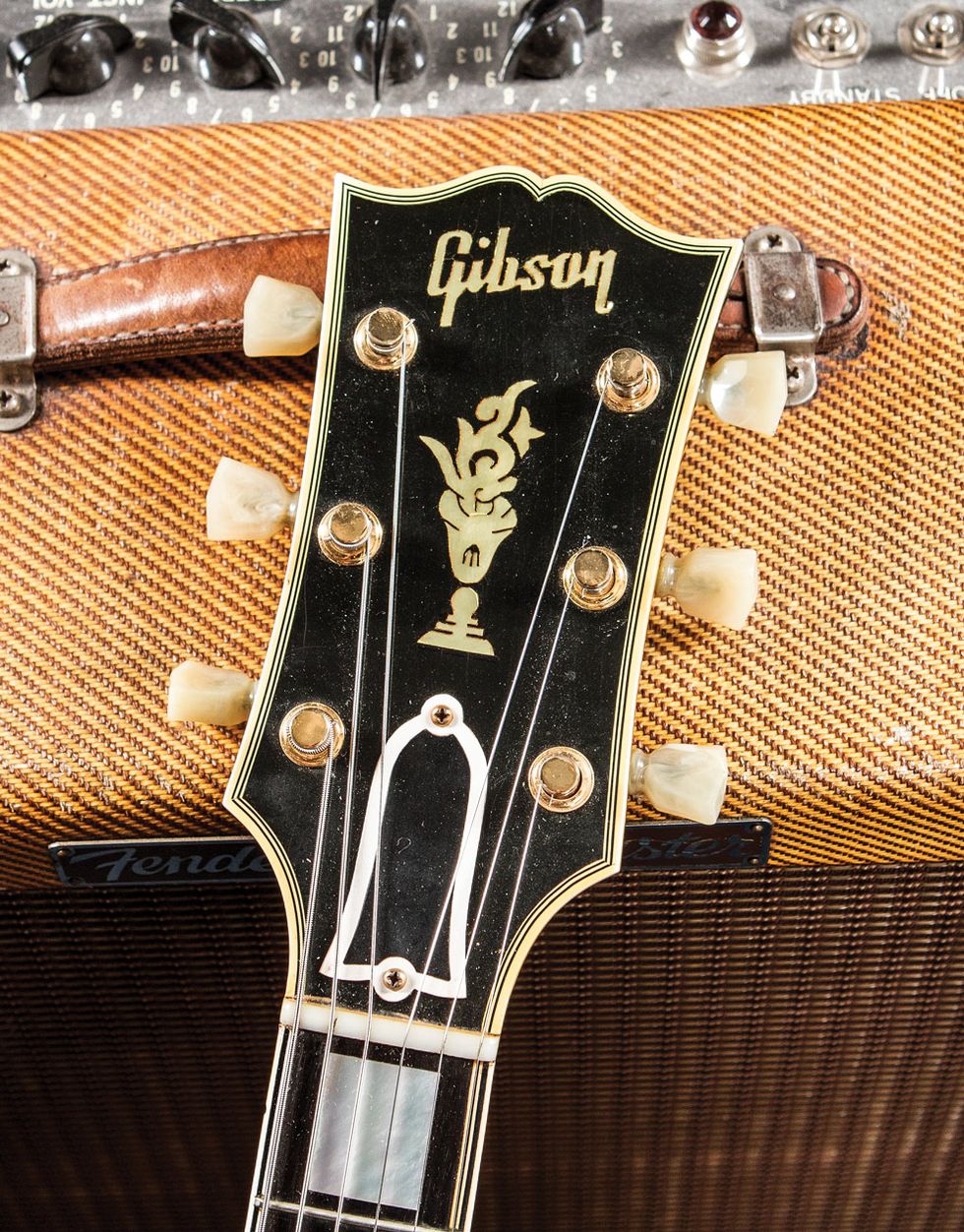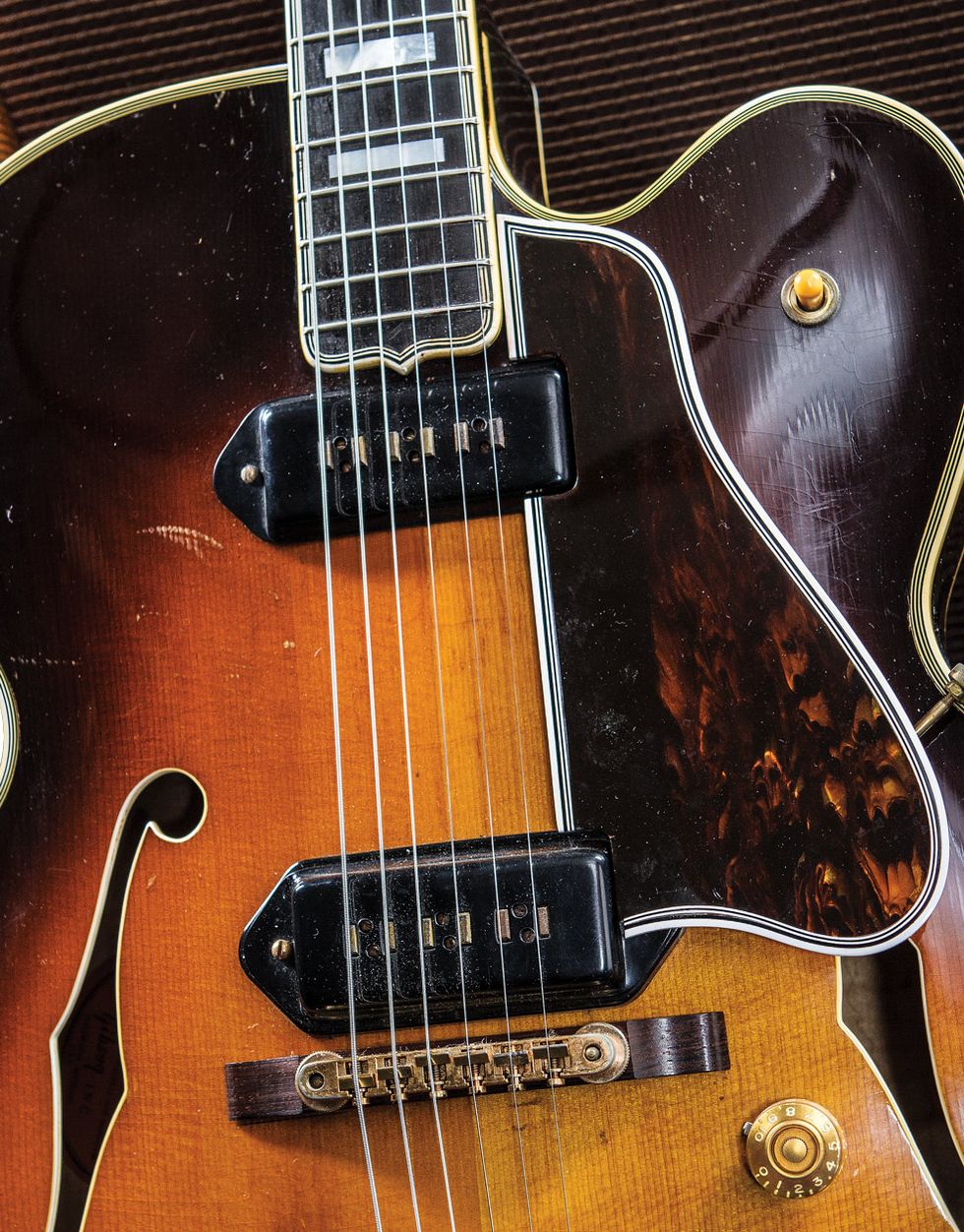The post-World War II boom included a golden era for American manufacturing, and guitar building was no exception. Gibson focused on expanding its electric guitar range after the War’s rationing of supplies and labor ended and normal production could resume. At the time, it was thought that electric guitars didn’t need solid wood for sound reproduction, and even the top-of-the-line ES-5 (introduced as “the supreme electronic version of the L-5”) had all-laminate construction. By 1951, because enough guitarists demanded it, the venerated Super 400 and L-5 were electrified. But these new CES (cutaway electric Spanish) guitars benefitted from a deeper understanding of electric guitar construction and were made from solid woods, and received the same decorative embellishments as their acoustic counterparts.
The now-classic layout of volume and tone knobs for each pickup, with a 3-way toggle selector switch, was used to control the two P-90 pickups in the bridge and neck positions. By the end of 1953, these guitars were upgraded with newly designed, powerful single-coil pickups using alnico 5 magnets and the Tune-o-matic bridge (also introduced that year), which allowed for truly accurate intonation.
With its nicks and scratches, this was obviously a player’s guitar, but it still has its original pickups, tailpiece, and other appointments. Today it’s valued at about $15,000.
The L-5 CES was advertised as being the best of both worlds, acoustically and amplified, and was described this way in the 1955 Gibson Catalog: “The depth and mellowness of the L-5 CES is winning acclaim for this fine guitar from the most discriminating artists. The tonal quality of the acoustic guitar and the advantages of an electric instrument are combined in this one superlative instrument.”
Typical of classic Gibson hollowbodies, this L-5 CES has the company’s so-called Grecian urn headstock inlay, flanked by a set of Kluson Sealfast tuners.
The 1955 L-5 CES pictured has all the features common to that year, explained in the 1955 catalog thusly:
- Pickups are close to the bridge and fingerboard.
- Great sustaining power and perfect accuracy of each string are achieved through the Gibson Tune-o-matic bridge and extra large, individually adjustable Alnico No. 5 magnets.
- Pickups have adjustable pole pieces and separate tone and volume controls, which can be pre-set.
- Three-position toggle switch on treble side activates either or both pickups.
- Kluson Sealfast pegs.
- Professional 20-fret fingerboard and Gibson adjustable truss rod neck construction.
- Body size: 17" wide and 21" long.
- All metal parts are gold plated.
Twin dog-ear P-90 pickups with alnico 5 magnets provide the electric side of this classic archtops’s voice. Each pickup has its own volume and tone knob, and is switchable via a 3-way toggle.
Only 19 sunburst L-5 CES guitars were shipped in 1955 and the list price was $600. The current value for one in excellent all-original condition is $15,000.The amp behind this guitar is a 1955 Fender Bandmaster equipped with two 6L6 power tubes that send 30 watts of power through three Jensen 10" speakers. The 1955 list price for the amp was $289.50. Its current value is $7,500.
Sources for this article include The Gibson L5: Its History and Its Players by Adrian Ingram, Gibson Electrics by A.R. Duchossoir, the 1955 Gibson Electric Guitars and Amplifiers catalog, Gibson Shipment Totals: 1937–1979 by Larry Meiners, and Fender Amps: The First 50 Years by John Teagle and John Sprung.














![Rig Rundown: John 5 [2026]](https://www.premierguitar.com/media-library/youtube.jpg?id=62681883&width=1245&height=700&quality=70&coordinates=0%2C45%2C0%2C45)




![Rig Rundown: Russian Circles’ Mike Sullivan [2025]](https://www.premierguitar.com/media-library/youtube.jpg?id=62303631&width=1245&height=700&quality=70&coordinates=0%2C0%2C0%2C0)








